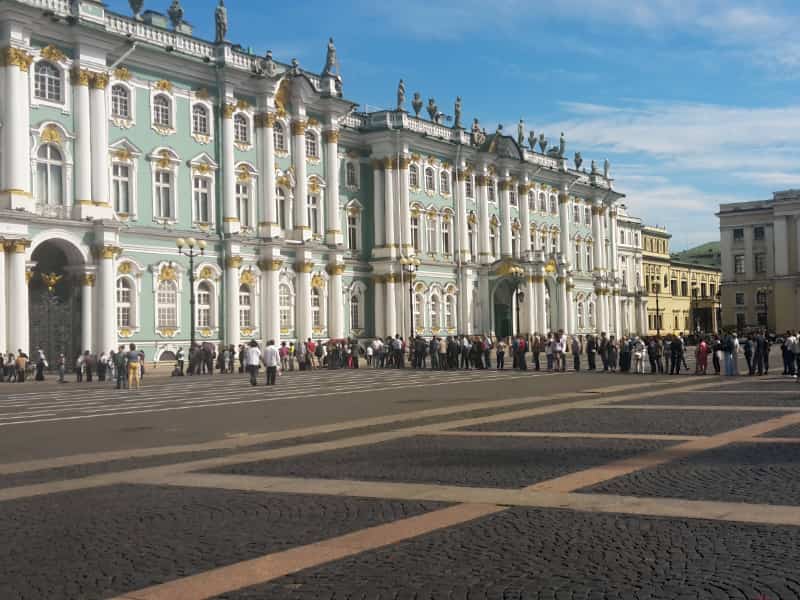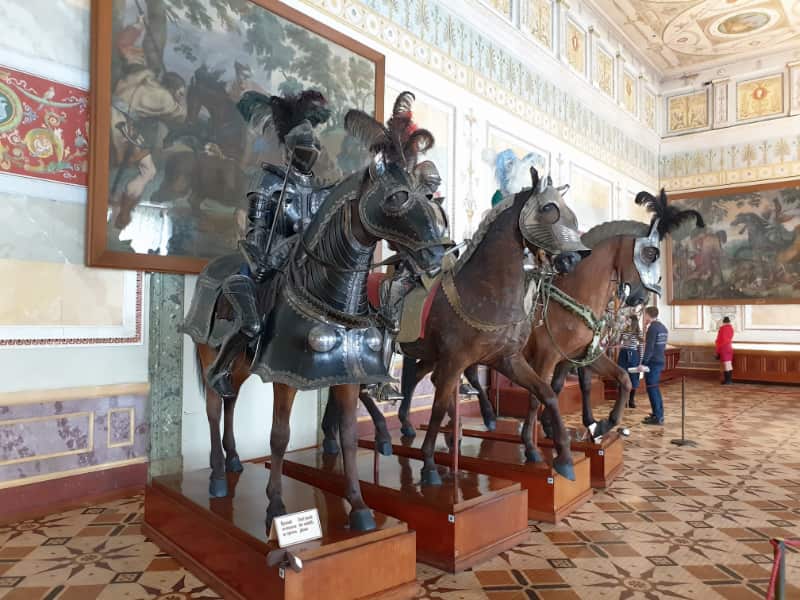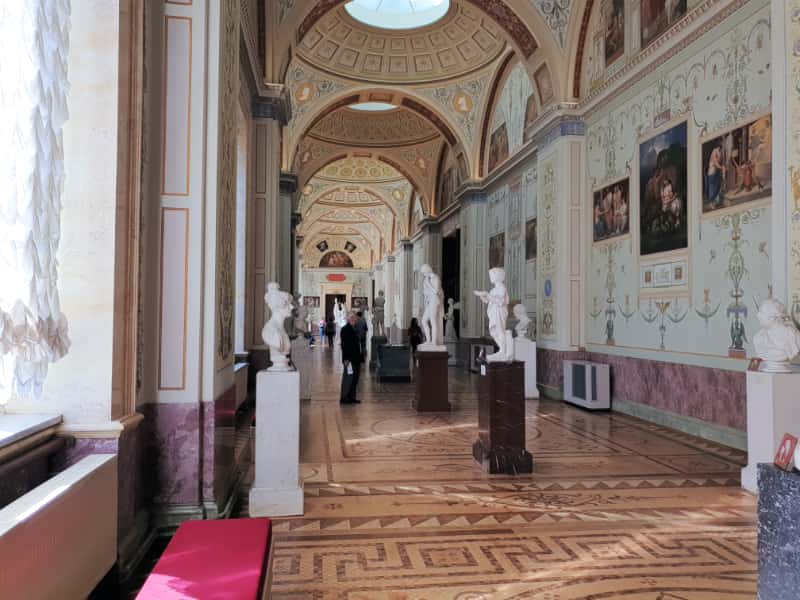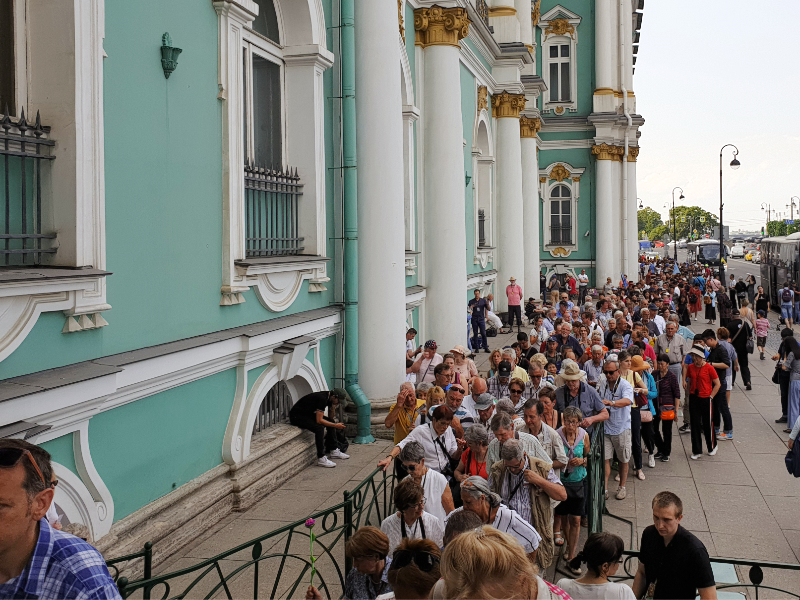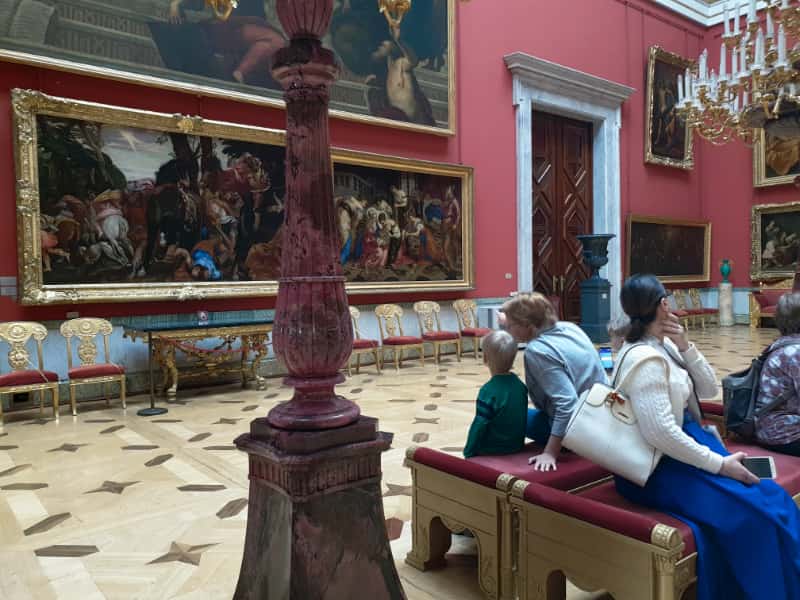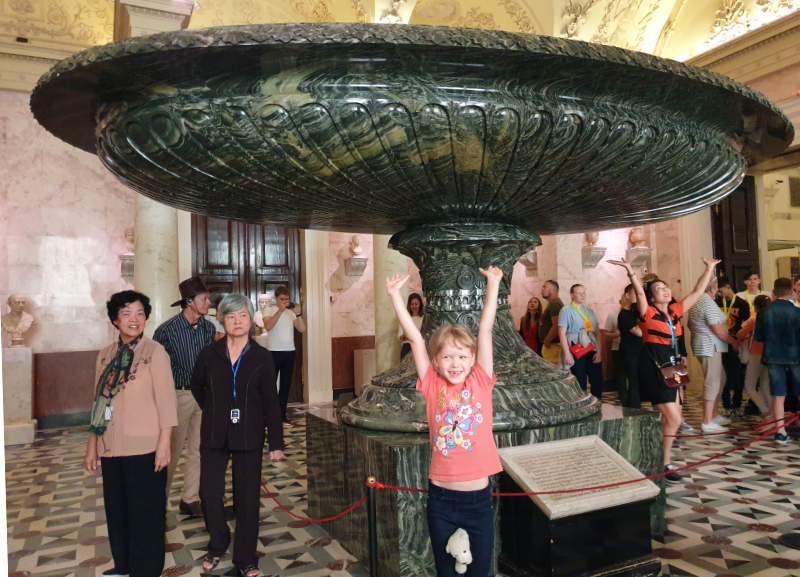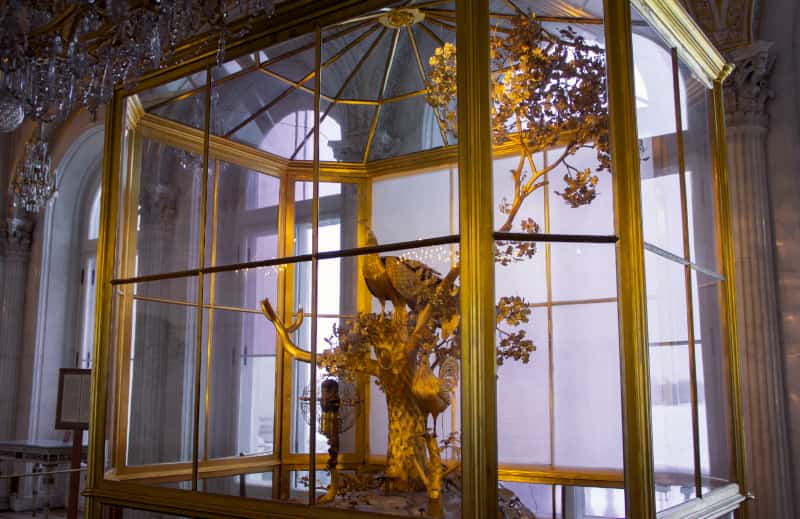The Hermitage museum is one of the first things associated with St. Petersburg. Even those people who are not art lovers in their everyday life include at least a short Hermitage tour in their trips to Russia. And no wonder: alongside with the Kremlin and Red Square, the Hermitage museum is a symbol of Russia, our country’s culture and history.
Everybody has different expectations regarding the Hermitage. Some people come to see the opulent winter residence of the Russian royalty.
The magnificent residence of the Russian tsars built just for the winter time use is mind-boggling. The huge palace occupies the area of 3,6 hectares, the total length of its rich baroque facades is almost 2 km. This palace alone has 1057 halls and rooms. Apparently in the age of palace coup-d’états, architect Rastrelli created some secret rooms and passages too. Till nowadays no one can tell their precise number, but the Hermitage Museum workers agree there are at least 20. The floors and the rooms of the Winter Palace are interconnected with 117 staircases and separated with 1786 doors. There are 1945 windows.
Others come for the West European art masterpieces. During the tour one can see copyists who come to the Hermitage as part of their studies or work. Those keen on jewelry will enjoy the unique and exquisite exhibits of the Hermitage Special Treasury, known as Gold and Diamond Rooms. Even fashionistas will find exhibitions and items telling about historic dressing and textiles as well as items by modern clothes designers.
The Hermitage Museum is everything and anything. All in all it counts over 3,1 million items divided between 6 main departments:
- West European Art (the oldest and the largest department),
- Department of Art of Ancient Greece, Rome and Ancient Greek Colonies,
- Primitive Culture,
- Oriental Culture and Art,
- Department of Russian Culture (this one mostly includes Russian applied art, some paintings to show the faces of different historic epochs and State rooms and living apartments of the tsars),
- Numismatic Department (coins and medals).
Museum’s website
Hermitage
Hermitage Tour
Your Hermitage tour can be as long as one day or as short as one hour. I know for sure: this museum never fails to impress. The longest tour that our company’s ever provided was 1 week in the Hermitage for a British group of art lovers.
Of course, the image of the State Hermitage Museum is that of a vast picture gallery. But it’s not only that. Paintings comprise just a share of the collection – around 17 thousand exhibits. The biggest part of the Hermitage holdings make archeological finds (over 750 thousand artefacts) and applied art items (over 350 thousand pieces). In fact, the Hermitage is a spiritual universe where artistic interiors make a perfect setting for the masterpieces of human genius of all times and peoples. Each – even the smallest – exhibit is priceless.
Everyone knows such art treasures as works by da Vinci, Raphael, Rembrandt, Titian, Rubens, Monet, Picasso or Matisse. Those bring the fame to the Hermitage. But here are 5 most unusual museum exhibits you can come across during your tour:
- Peacock Clock. This enormous clock was created by James Cox (English jeweler, goldsmith and clock master) and purchased by Potyomkin for Catherine the Great. It is the only 18th century mechanism of that size still in working order. When the clock chimes, the whole composition is set into motion: the performance starts with the peacock spreading its train and turning, then the owl, the rooster and even the cage – everything starts moving. The clock is wound to chime every Wednesday at 7 p.m. Come and enjoy!
- Miniature Royal Regalia by Carl Faberge. There are no Faberge eggs among the Hermitage exhibits, but Carl Faberge Memorial rooms in the General Staff building show an extremely interesting collection of Faberge items. The gem of the exhibition is a miniature replica of the Imperial regalia made by Faberge for the Exposition Unievrselle in Paris in 1900.
- Kolyvan Vase (the Great Vase). The world’s biggest vase is also kept in the Hermitage Museum. It took-stone cutters of Kolyvan lapidary works (the Altai mountains) almost 13 years to produce this remarkable piece, that weighs 19 tons. It took half a year and from 150 to 180 horses to bring the vase to the Hermitage, where by that time a special room with reinforced foundation was prepared.
- Mummified Horse from Pazyryk Barrow. The Hermitage Museum has six or seven mummies in its collection. But, of course no one is surprised to see a priest’s mummy in the Ancient Egypt exhibition – many world museums show those. However, the Hermitage also has a unique mummy of a horse found during excavations of Pazyryk Barrow at the Altai.
- Historic Graffito. The former residence of the Russian tsars has survived revolutions, the Siege during WWII and many waves of restoration. That makes the bits and pieces – evidence of the real everyday life of its royal inhabitants even more valuable and interesting. Among the unusual artefacts one can find several pre-revolutionary window glasses. One of them bears the inscription “Nicki looking at the hussars” that Alexandra scratched with her diamond ring in 1902.
Impressionists and Postimpressionists in the Hermitage Museum
The world renowned Hermitage collection of Impressionists, Postimpressionists and beginning of the 20th century artists is located in a separate building. Just across Palace Square from the Winter Palace and the main museum complex there’s former General Staff building that nowadays belongs to the Hermitage Museum. The General Staff building is a modern museum space that the Hermitage uses for various temporary and permanent exhibitions. It’s over here that you can enjoy masterpieces of Monet, Renoir, Van Gogh, Matisse and many others.
Visit the museum with comfort.
It’s easy to arrange a visit to the Hermitage Museum!

